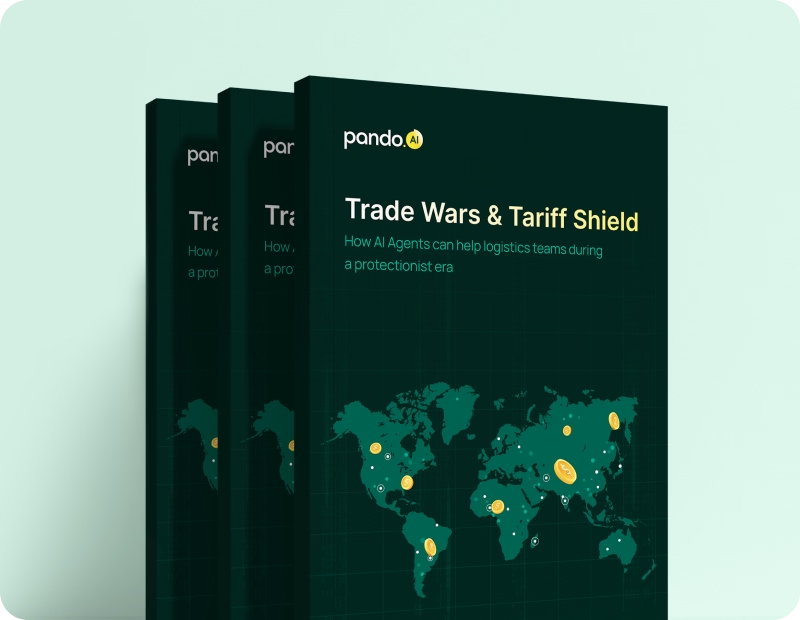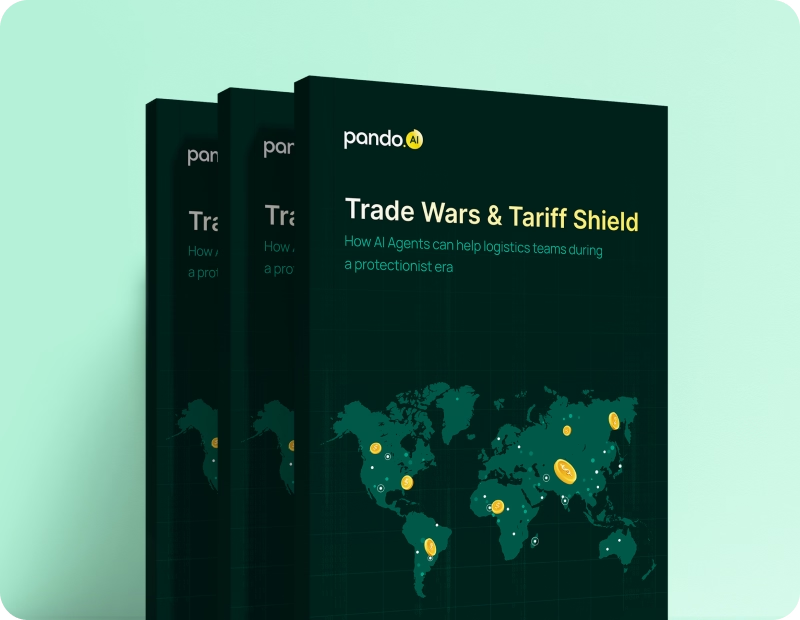-
Products Products
- Industry
- Initiatives
- Resources
- Company
- Book a demo

Before you go: Logistics leaders just dropped the truth on AI
The State of AI in Logistics 2025 is here — no hype, just real conversations and raw insights.
From plan to pandemonium: Why the supply chain planning-execution gap is your biggest bottleneck
Find out how AI can transform your supply chain from a bottleneck to a competitive advantage.
Published on August 13, 2024 • 6 mins read
Durga Pratiha

Find out how AI can transform your supply chain from a bottleneck to a competitive advantage.
Picture this: You've spent weeks meticulously planning your supply chain strategy—carefully mapped out every forecast, inventory level, and shipment route. Yet, something feels off. Orders are delayed, inventory levels fluctuate, and your team is constantly firefighting. Sound familiar?
This is the gap between supply chain planning and execution, a critical challenge that can erode profits, disappoint customers, and leave you vulnerable to disruptions. But there's hope. Artificial Intelligence (AI) is emerging as a game-changer in supply chain management, with the potential to bridge this gap once and for all.
In this blog, we'll explore how AI is revolutionizing supply chain execution, transforming plans into operational reality. We'll examine the root causes of this disconnect, its costly consequences, and how AI can be your trusted partner for creating a seamless, responsive, and resilient supply chain.
Understanding your supply chain planning to execution disconnect
You've likely experienced the frustration of seeing your carefully crafted supply chain plans unravel during execution. But what's causing this persistent gap? Let's dive deeper into the key factors:
- Data quality issues: Your decisions are only as good as your data. Inconsistent or outdated information leads to flawed forecasts and misaligned inventory.
- Organizational silos: When departments don't communicate, chaos ensues. Sales, operations, and logistics need to be on the same page.
- Limited visibility: You can't fix what you can't see. Lack of end-to-end visibility leaves you vulnerable to unexpected disruptions.
- Dynamic markets: Customer demands and global conditions change rapidly. Static plans quickly become obsolete in this fast-paced environment.
- Complex networks: Modern supply chains are intricate webs. A small hiccup can cascade into major disruptions across your network.
- Technology hurdles: Investing in new tech is just the first step. Resistance to change and poor integration can hinder your digital transformation.
Understanding these root causes is the first step in bridging the supply chain planning to the supply chain execution gap. By identifying which of these factors are most prevalent in your organization, you can begin to target your improvement efforts more effectively.
The cost of misalignment: Why your supply chain gap matters
When your supply chain planning and execution are out of sync, the consequences ripple through your entire business.
Customer dissatisfaction:
- Stockouts leave customers empty-handed and frustrated.
- Delayed deliveries erode trust and loyalty.
- Inconsistent service quality damages your brand reputation.
- Customers may switch to competitors, leading to long-term revenue loss.
Increased operational costs:
- Excess inventory ties up capital and increases storage costs.
- Emergency shipments and expedited freight eat into your margins.
- Constant firefighting diverts resources from strategic initiatives.
- Inefficient processes lead to higher labor costs and overtime expenses.
Revenue losses:
- Missed sales opportunities due to stockouts directly impact your top line.
- Discounts to appease dissatisfied customers cut into your profits.
- Market share erosion as competitors capitalize on your supply chain weaknesses.
- Difficulty in launching new products or entering new markets due to unreliable supply.
Supply chain vulnerability:
- Lack of agility leaves you exposed to sudden market shifts.
- Limited visibility hinders your ability to mitigate risks proactively.
- Overreliance on specific suppliers or routes increases your risk exposure.
- Difficulty in adapting to regulatory changes or trade disruptions.
Sustainability setbacks:
- Inefficient operations lead to increased carbon emissions.
- Excess inventory often results in waste and obsolescence.
- Rushed, sub-optimal shipping decisions negatively impact your environmental footprint.
- Challenges in implementing and tracking sustainable practices across your supply chain.
Financial performance impact:
- Lower profit margins due to increased costs and lost sales.
- Reduced cash flow from tied-up inventory and delayed collections.
- Potential loss of investor confidence as supply chain issues impact overall business performance.
- Difficulty in securing favorable terms with suppliers and financial institutions.
Competitive disadvantage:
- Slower response to market changes compared to more agile competitors.
- Inability to offer the same level of service or pricing as better-aligned rivals.
- Missed opportunities for strategic partnerships due to unreliable performance.
- Challenges in scaling the business or entering new markets.
Bridging the gap: A comprehensive approach
To effectively close the planning-execution gap, supply chain leaders need a well-rounded strategy that integrates people, processes, technology, and artificial intelligence:
Leveraging AI to bridge the planning-execution gap
The disconnect between supply chain planning and execution often arises from a lack of real-time visibility, dynamic adjustments, and consideration of operational constraints. An AI-first approach addresses these challenges by:
- Real-time visibility: AI integrates data from sources like TMS, WMS, ERP, and IoT devices, providing a comprehensive view of the supply chain. Machine learning forecasts demand, lead times, and disruptions, enhancing planning accuracy.
- Dynamic adjustments: AI enables scenario planning to simulate demand fluctuations and disruptions, while adaptive planning allows for real-time adjustments based on changing conditions and unforeseen events.
- Operational constraints: AI considers transportation capacity, warehouse space, and workforce availability through capacity planning. Constraint programming solves complex planning problems by optimizing under specific constraints.
Supply chain leaders can further bridge the gap by leveraging historical data (e.g., past shipments, carrier performance, inventory levels) and external market intelligence (e.g., economic indicators, fuel prices, weather conditions). This combined approach ensures a more resilient and efficient supply chain.
AI-driven planning also allows for seamless measurement of key performance metrics, such as demand forecasting accuracy, inventory accuracy, on-time delivery rates, cost variance, and operational efficiency. Beyond bridging the gap, AI improves planning accuracy, reduces costs, enhances customer satisfaction, and increases supply chain resilience by proactively addressing disruptions and adapting to changing conditions.
Best practices for AI-driven supply chain optimization
Transforming your supply chain with AI isn't just about adopting new technology—it's about reimagining your entire operation. Here's your streamlined roadmap to leverage AI and bridge the planning-execution gap:
- Build a strong foundation - Start by assessing your digital maturity and investing in robust data infrastructure. AI thrives on quality data, so prioritize data governance, cleaning, and standardization. Begin with pilot projects in high-impact areas to build momentum and secure buy-in for larger initiatives.
- Develop your team and culture - Your workforce is crucial to AI success. Invest in upskilling programs to develop AI literacy across your organization. Foster a culture of continuous learning and innovation. Break down silos by creating cross-functional teams, ensuring IT, operations, and business units are aligned on AI initiatives and their expected outcomes.
- Choose strategic partnerships - Select AI vendors and consultants who understand your industry and can provide end-to-end support. Look for partners offering scalable solutions and ongoing support. Remember, the right collaborations can accelerate your AI journey and bring valuable expertise to your team.
- Implement with agility and ethics - Develop a comprehensive change management strategy to address concerns and ensure smooth adoption of AI technologies. Stay agile and be prepared to pivot your strategy as new opportunities arise. As you implement AI, consider its ethical implications, ensuring your systems are transparent, fair, and aligned with your company's values.
- Measure, learn, and adapt - Establish clear KPIs to measure the impact of your AI initiatives. Use these insights to refine and expand your AI strategy continuously.
Remember, AI implementation is a journey of continuous improvement. Stay informed about emerging technologies and be ready to evolve your approach based on results and new developments.
By embracing AI, you're not just solving today's challenges—you're future-proofing your supply chain. You'll move from reactive to proactive, rigid to flexible, and siloed to integrated.
The gap between planning and execution isn't just a problem to solve—it's an opportunity to leapfrog your competition. By harnessing AI, you can create a supply chain that's more than just efficient—it's intelligent, resilient, and a true driver of business value.
Subscribe to Pando blog and Crossroads newsletter now!
Stay up to date with the latest logistics, transportation, and supply chain tips and news.
Subscribe Here!











.png?width=1440&height=1758&name=Info%20Graphics%20(3).png)


